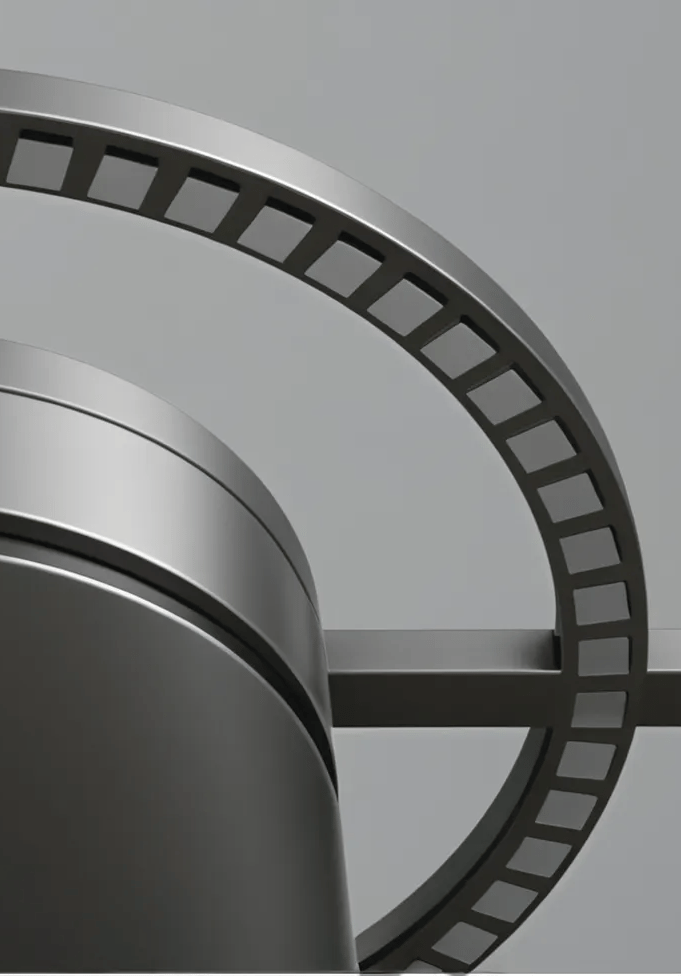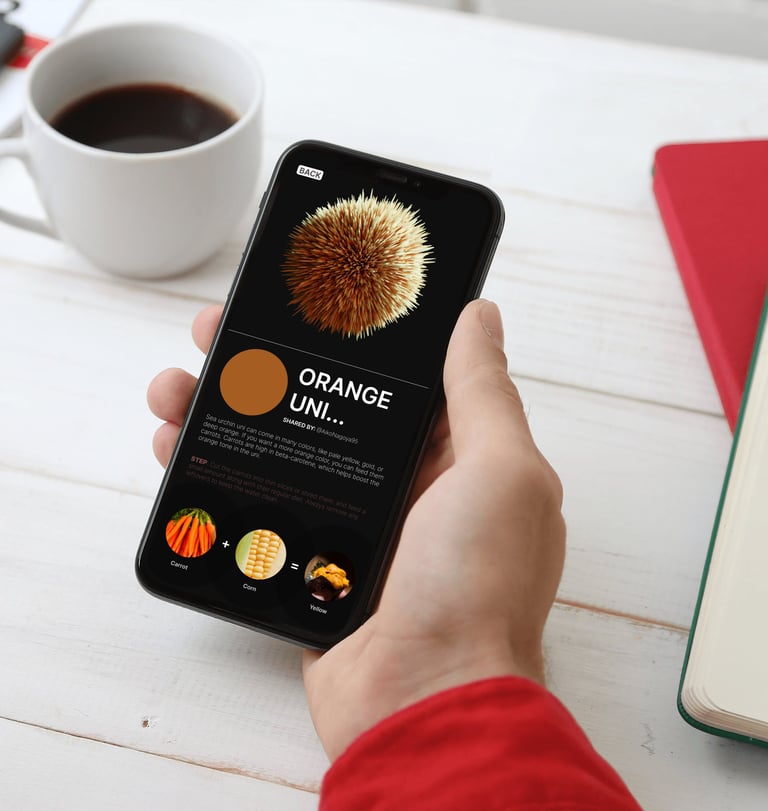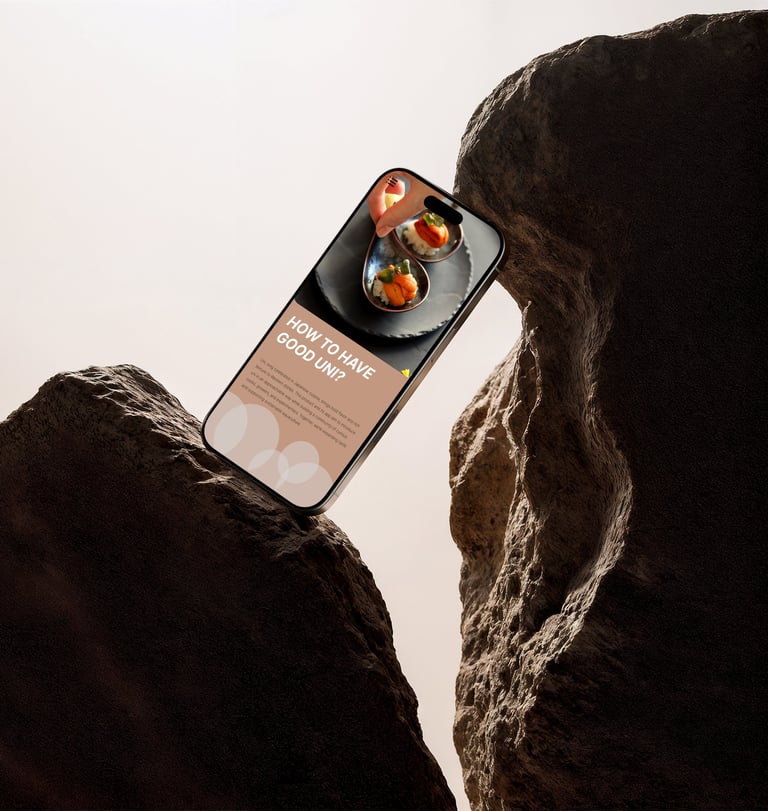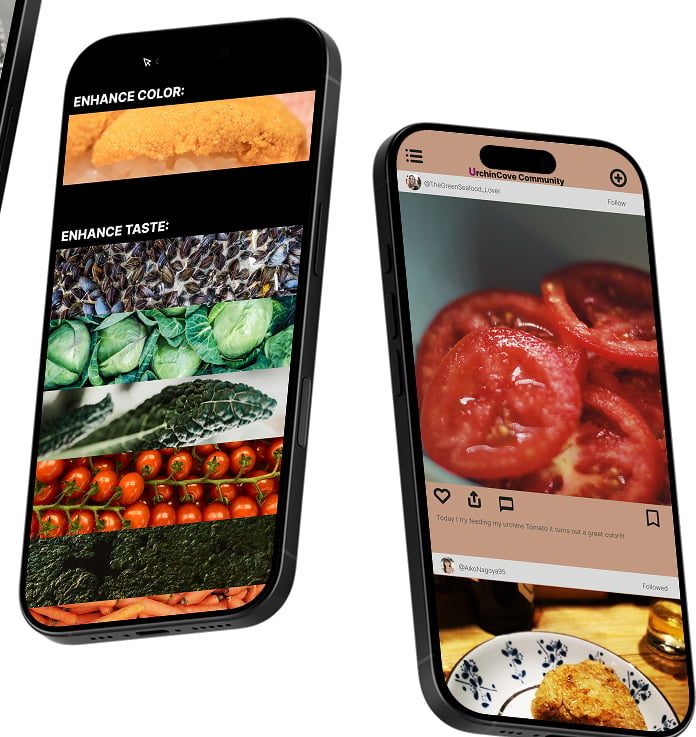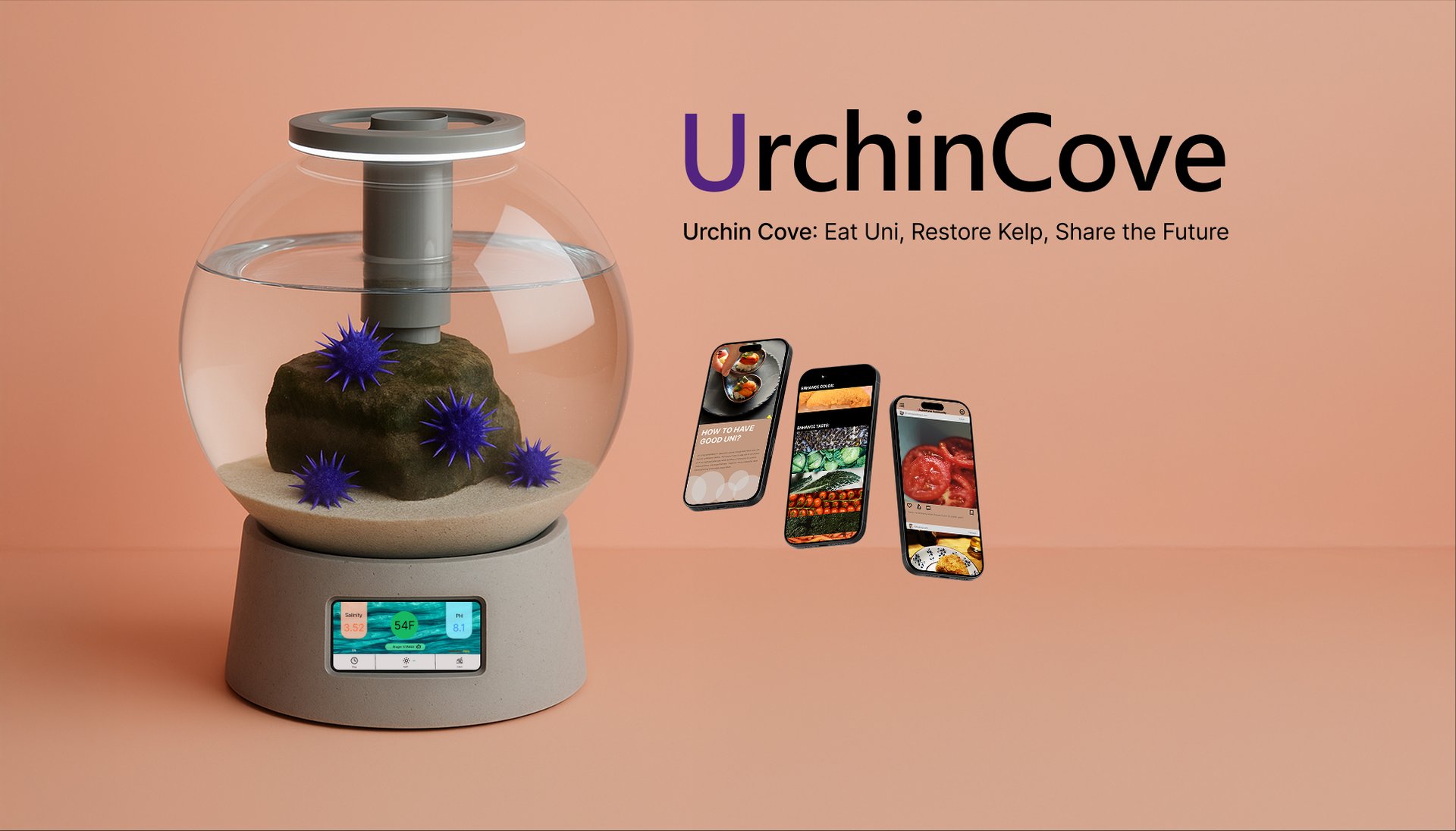
Designed Bryan Nguyen-Son, Berkeley Rose, Damani Thompson, and Calvin T.
UrchineCove not only makes sea urchin farming accessible at home, it also helps address the problem of purple sea urchin waste. Also, the product introduces sea urchin to Western culture, making experiences of growing and enjoying urchin more familiar and approachable to Western consumers.
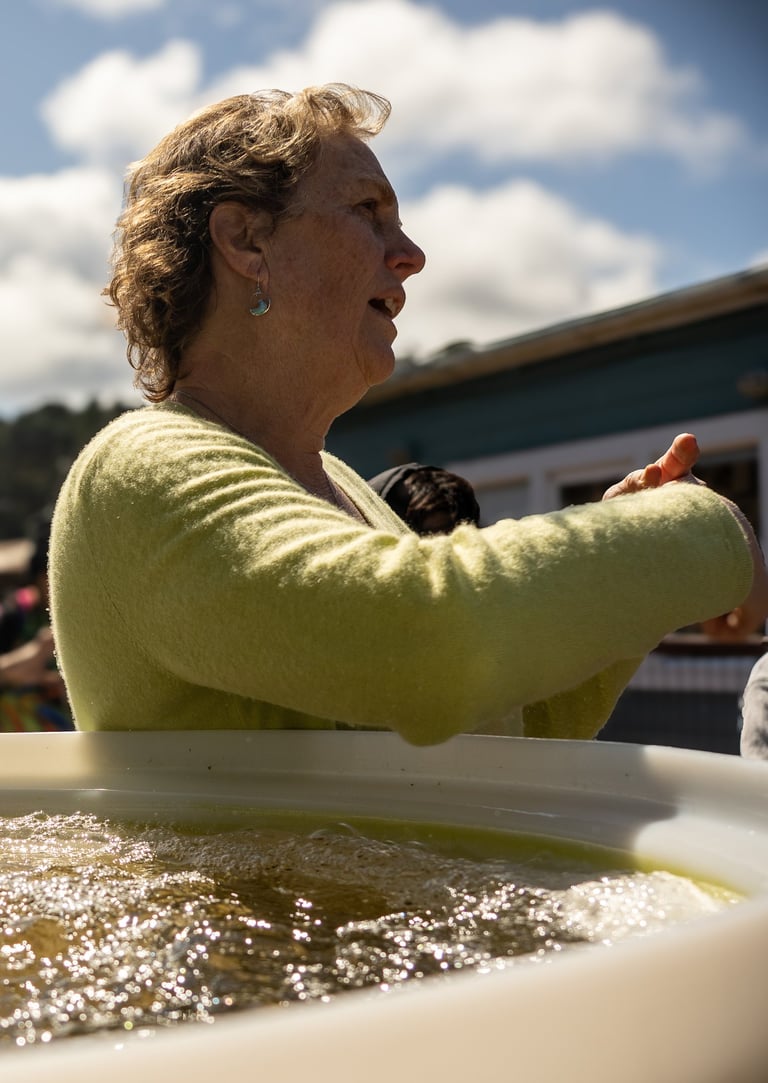

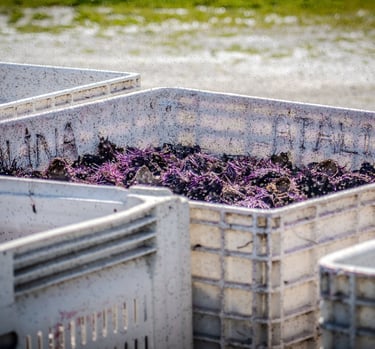

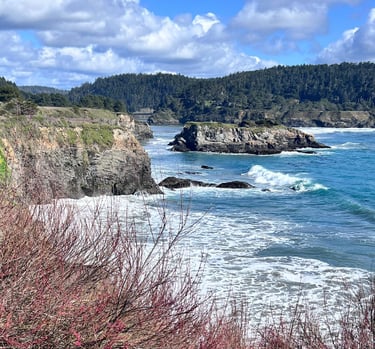

Along the U.S. West Coast, purple sea urchins have multiplied quickly, throwing the ecosystem out of balance. Instead of feeding on dead kelp, they now eat growing kelp, preventing it from regrowing. This harms other marine life, lowers the quality of the urchins themselves, and creates financial losses for local communities.
Challenges
Community Engagement Visit
We visited the affected coastal community to understand how the purple urchin population boom is destroying kelp forests and disrupting the ecosystem. By speaking with fishermen, farmers, restaurant owners, social workers, and local residents, we gained valuable insights into both the environmental damage and the impact on people’s daily lives.
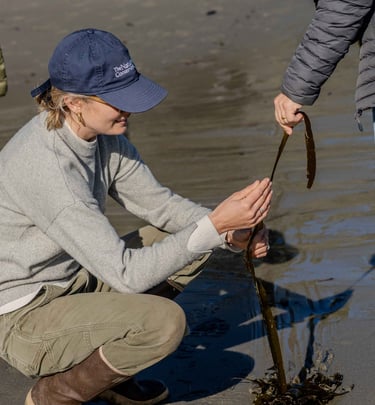

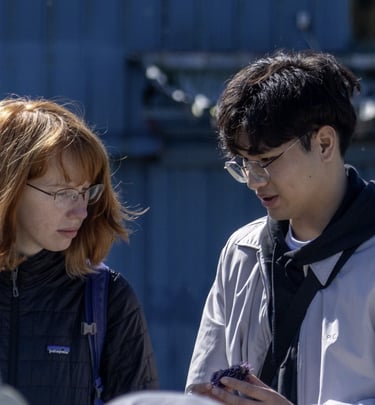

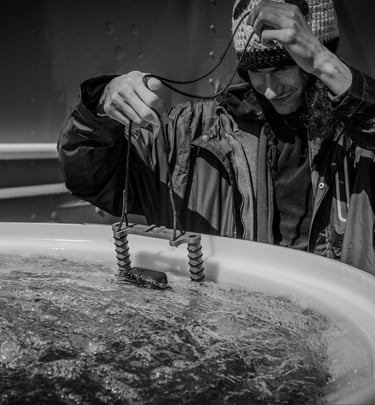

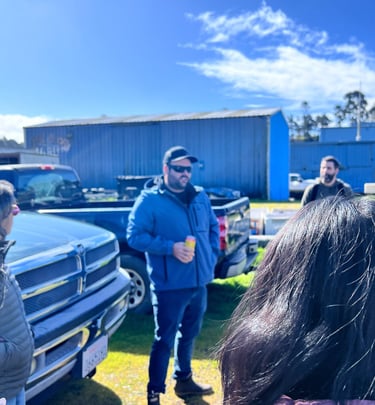

Pictures by: Damani Thompson
Proposition
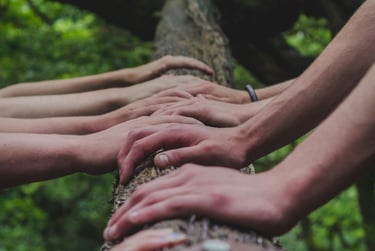

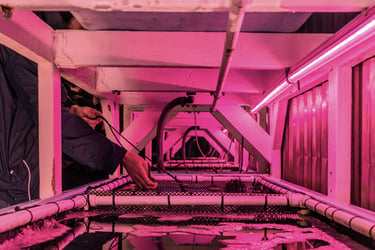

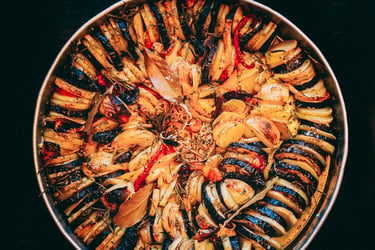

After visiting the locals and reserach into the issues we created UrchinCove - A home urchin tank with an app for users to share experiences and connect.
Our goal: reduce urchin overpopulation through eating and farming, introduce uni to American culinary, and fund/spread awareness of kelp restoration—all in one product.
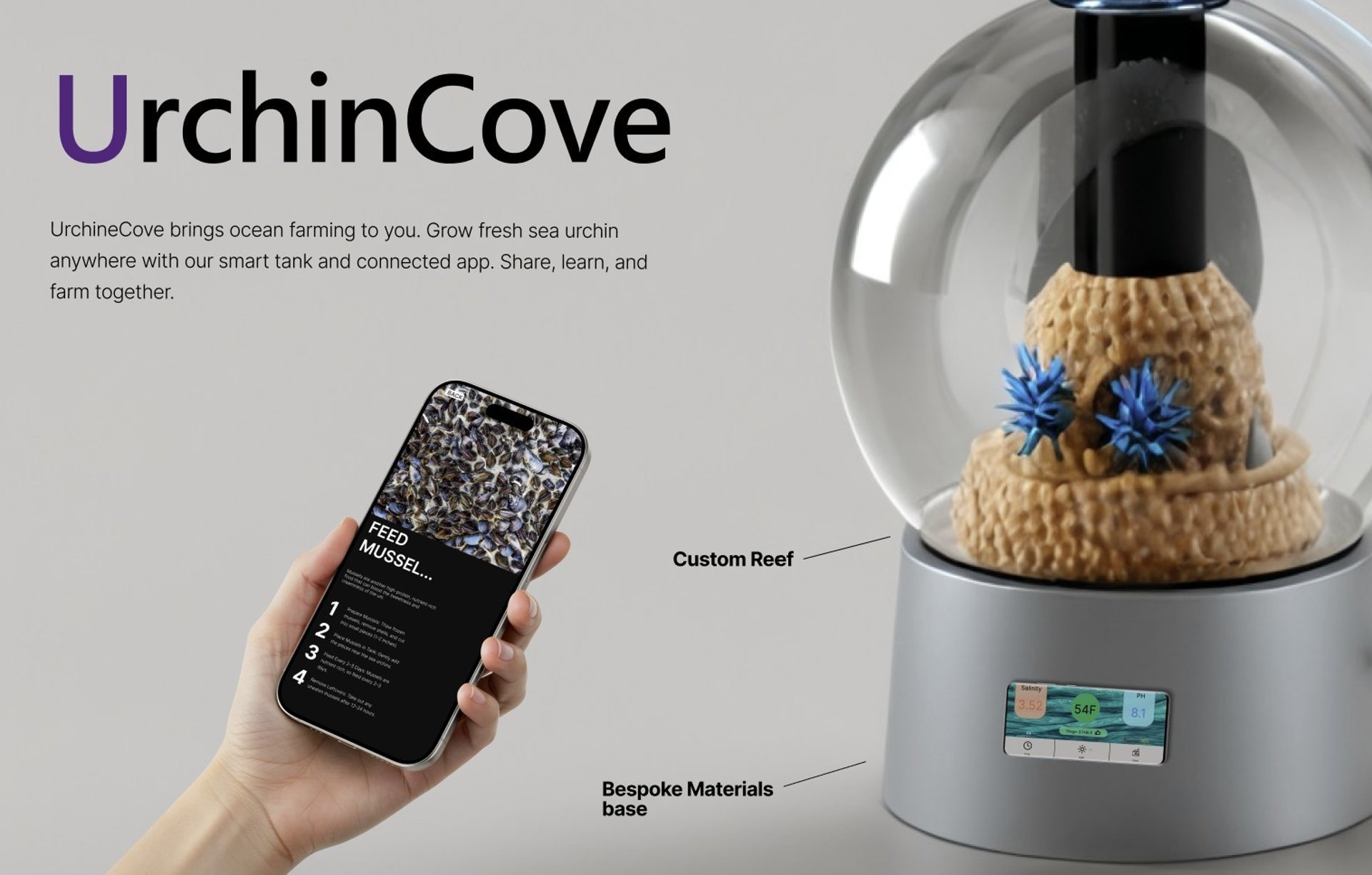
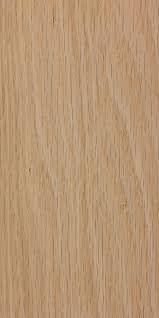

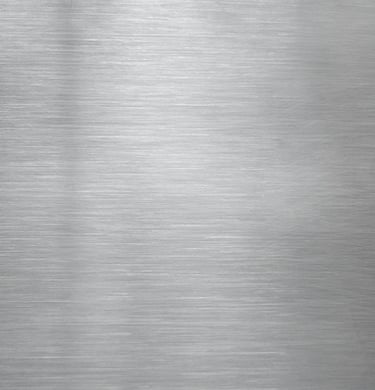

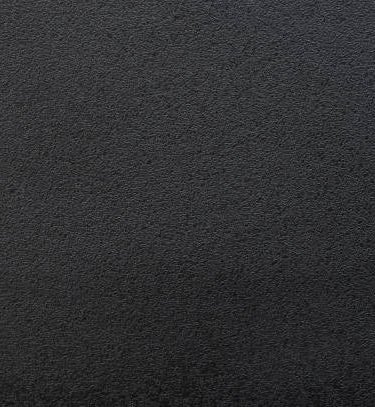

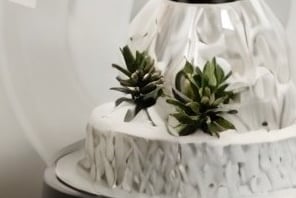

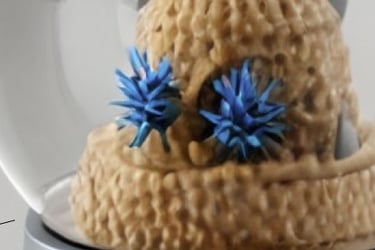

UrchinCove is inspired by the California coast, with colors and forms that reflect the natural beauty of sea urchins. Designed as a bespoke piece, it seamlessly fits into any space while remaining unique to its owner, from the custom materials of its base to the coral reef–inspired palette.
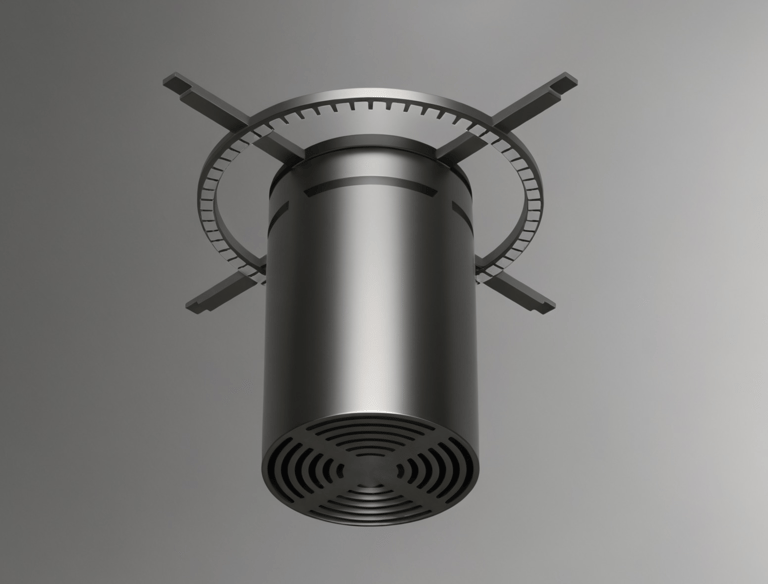

Technology & Features
Filtration – Quiet 60 GPH system keeps water stable
Lighting – LED halo boosts urchin growth and color
Tank – 18" clear acrylic sphere with 360° viewing.
Habitat – Sculpted rock as shelter create a ecosystem within
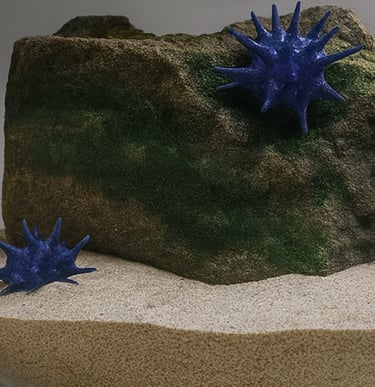

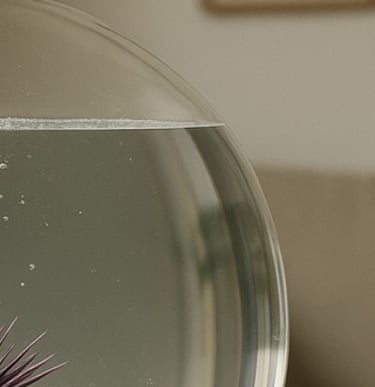

Design
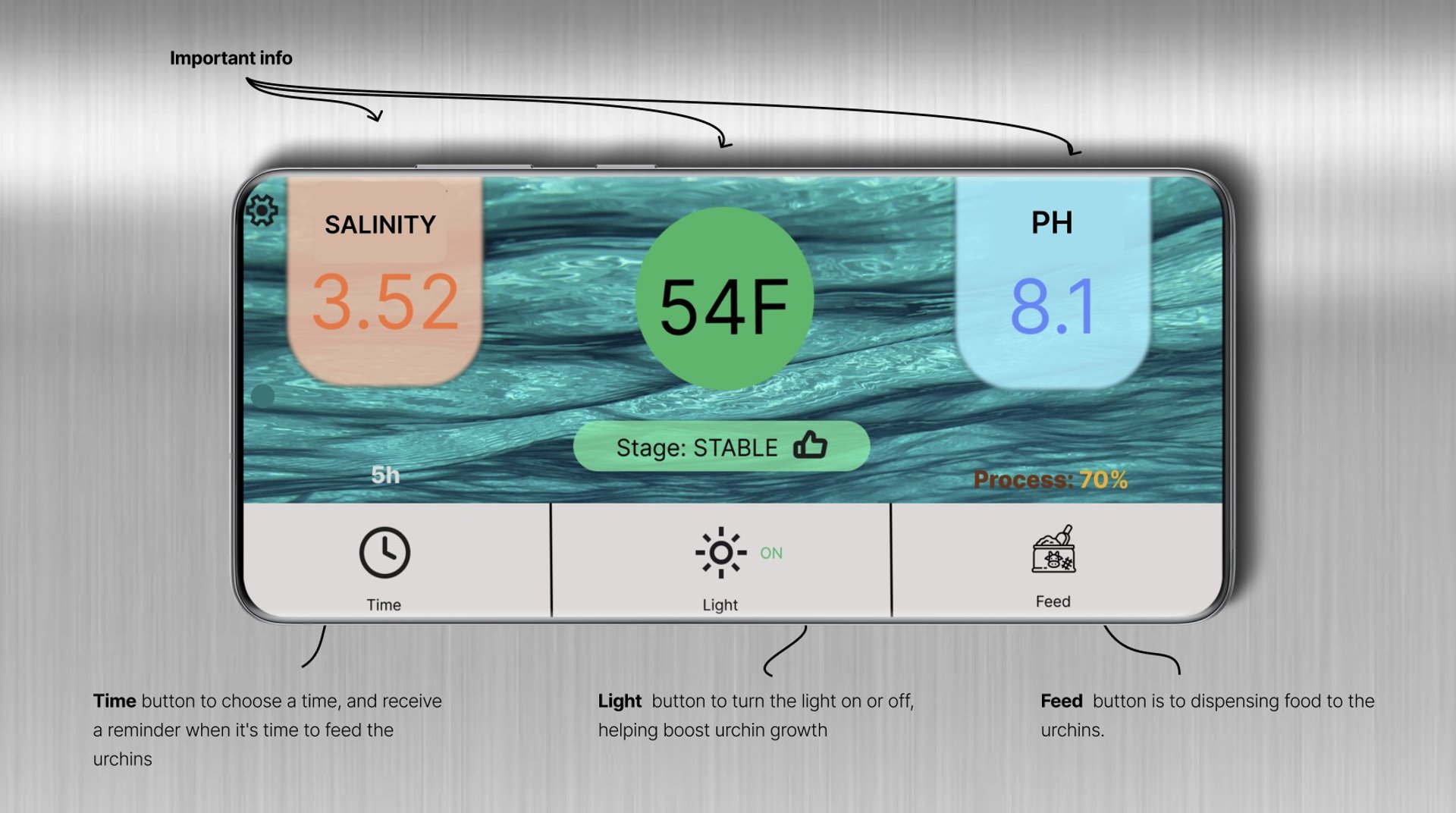
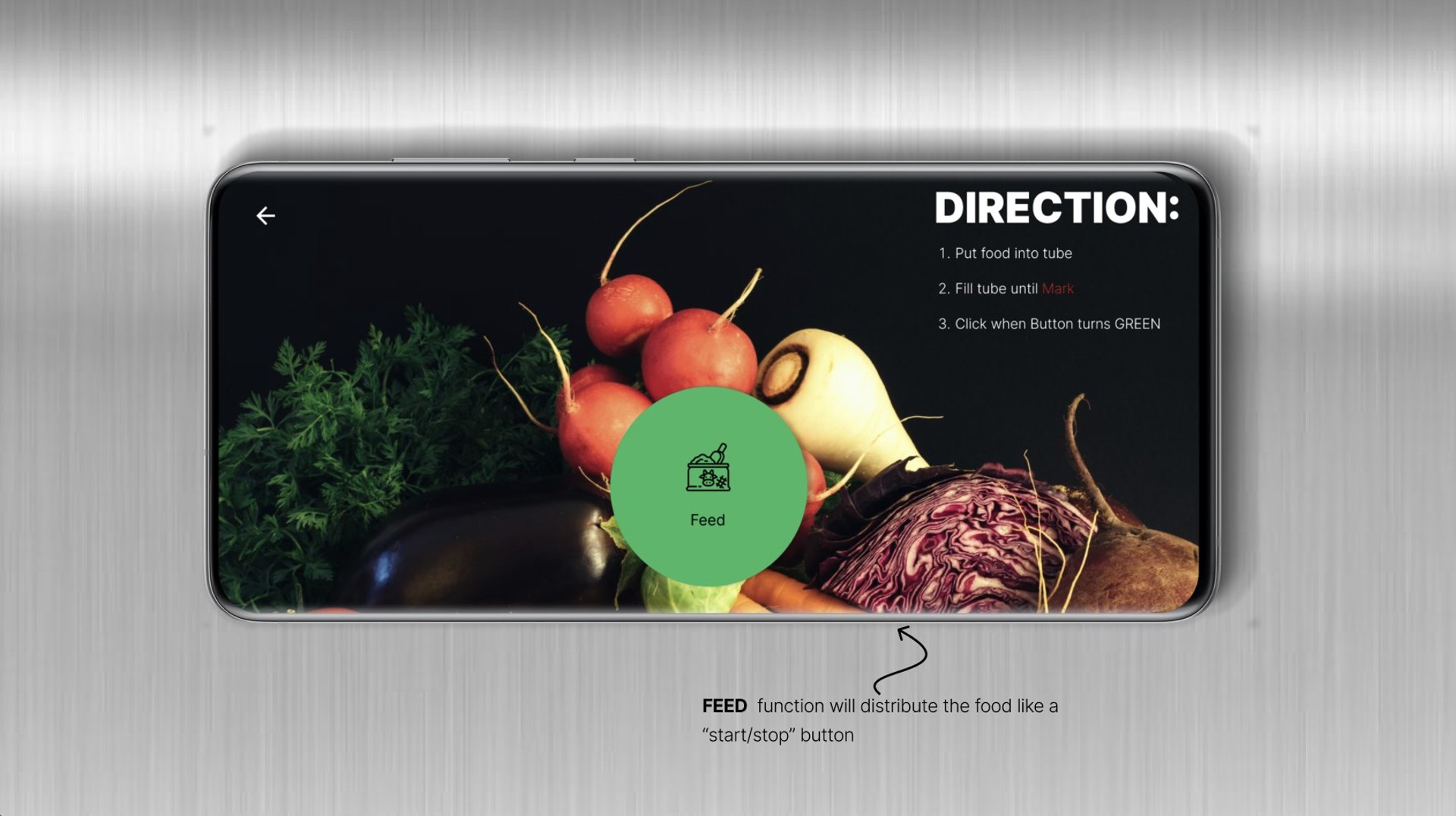
Explore our Mobile App
UrchinCove also has an app, but isn’t a product control app.
It is a community empowering app where people can connect, share stories, and stay updated.
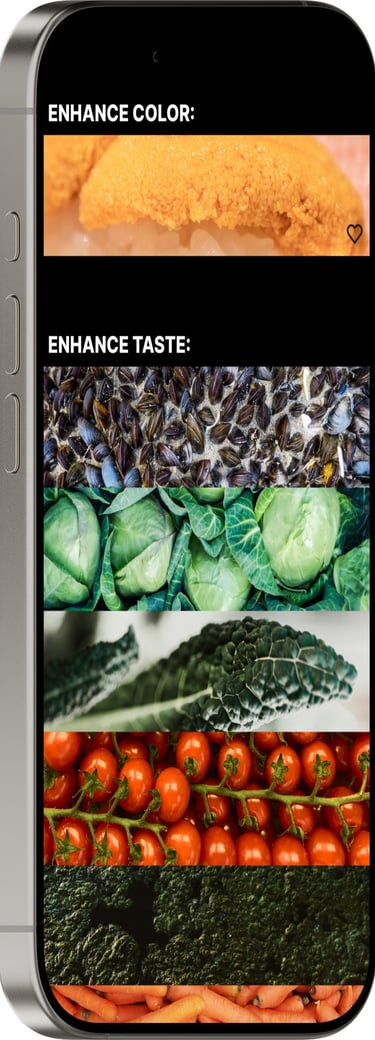

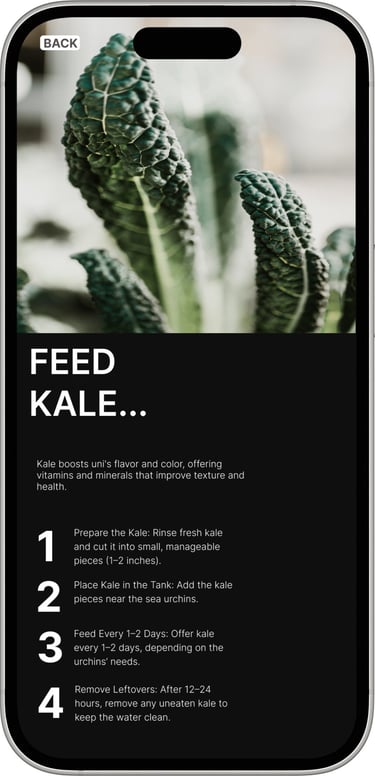

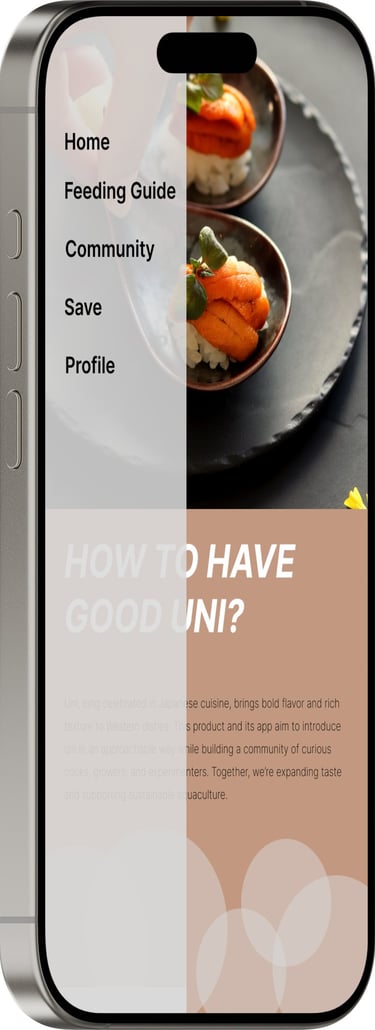

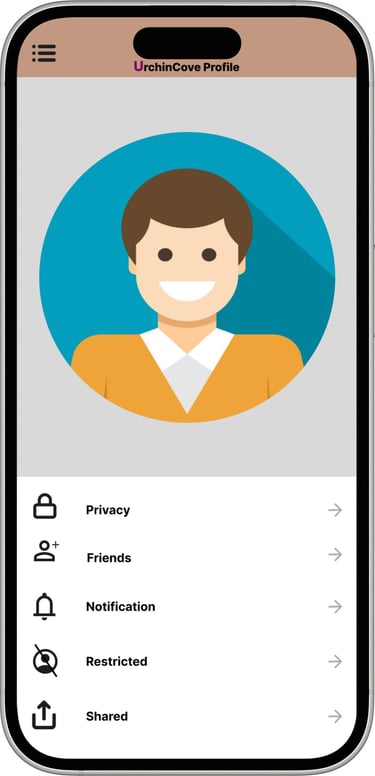

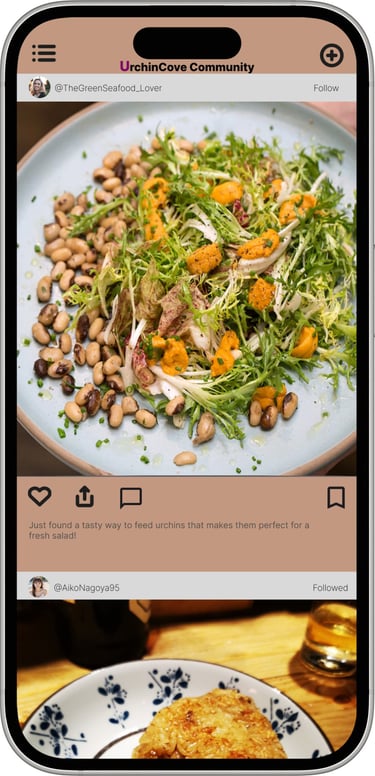

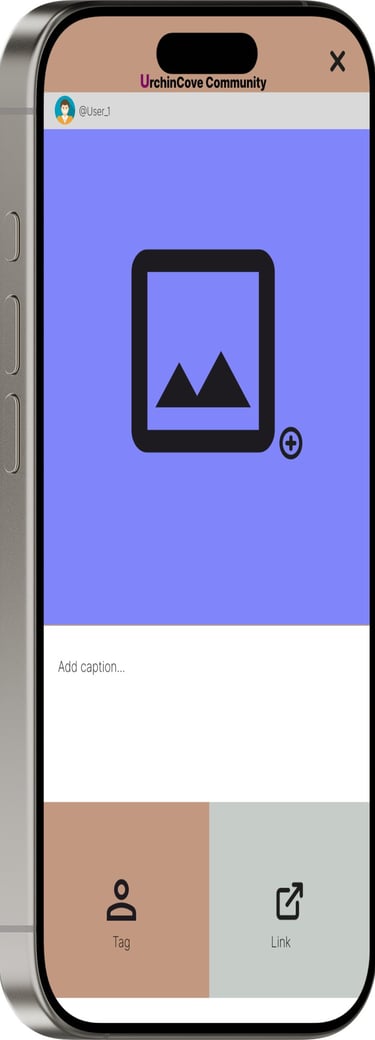

The app organizes features into intuitive panels, giving you quick access to what you need. At the same time, your profile keeps the journey personalized and consistent.
he Feeding Guide screen organizes your experience, giving you quick access to defaults, saved guides, and the ones you create yourself.
The Community Hub transforms UrchinCove from a product into a shared experience—a social platform where users post updates, connect, and exchange unique urchin farming and culinary methods.
Designed by Bryan Nguyen-Son
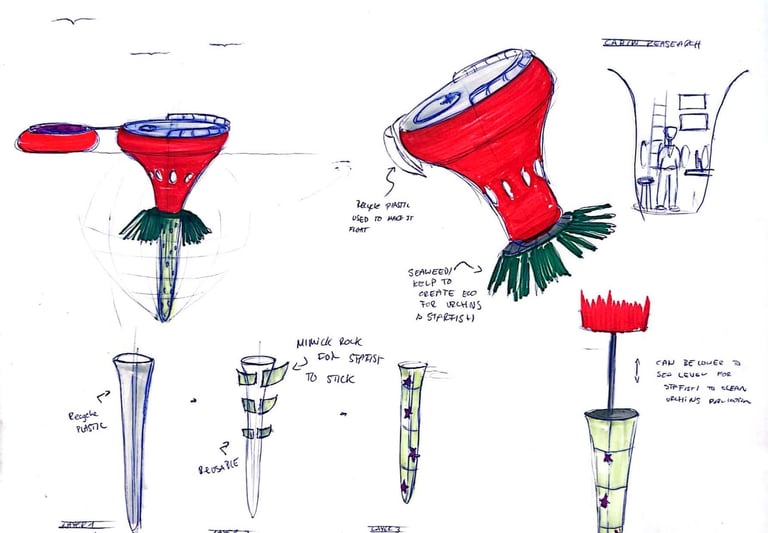

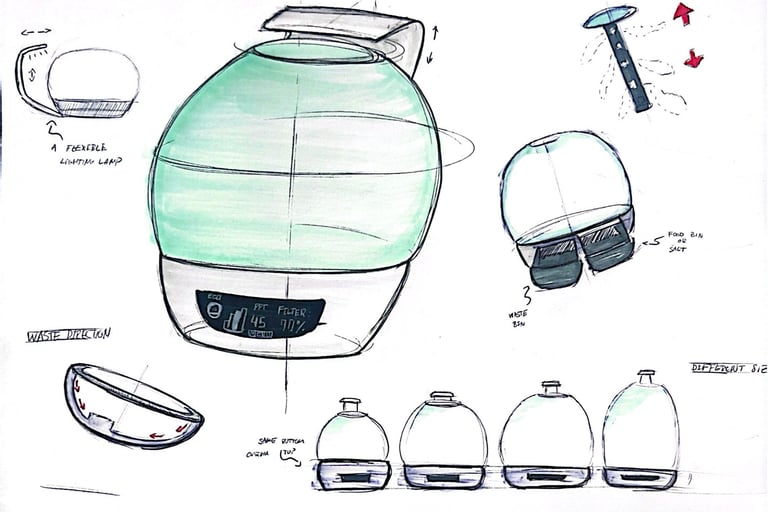

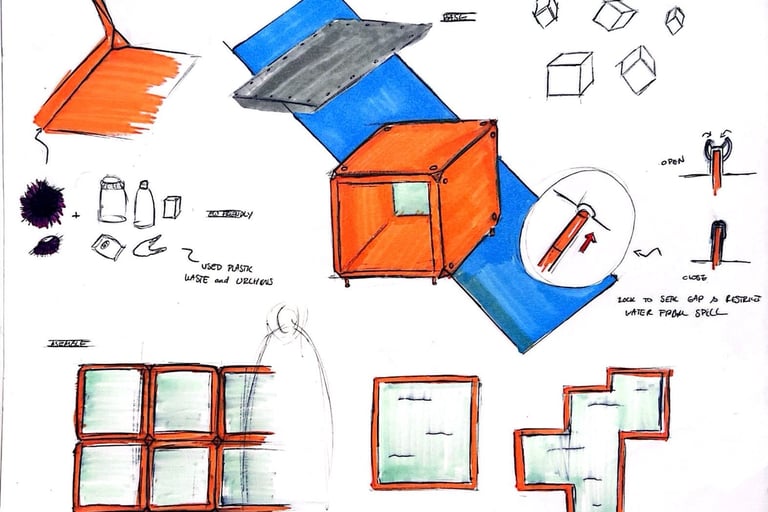

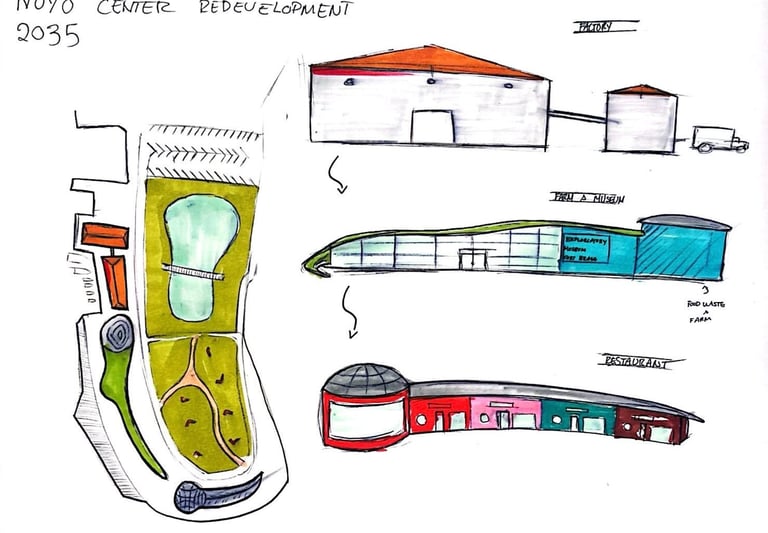

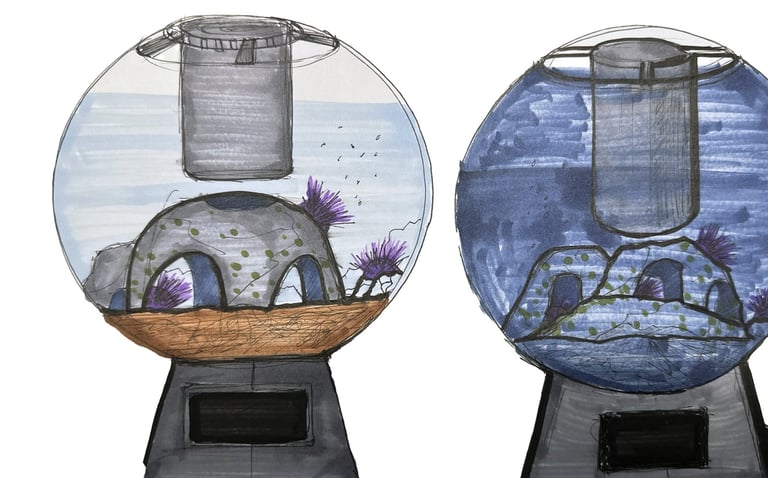

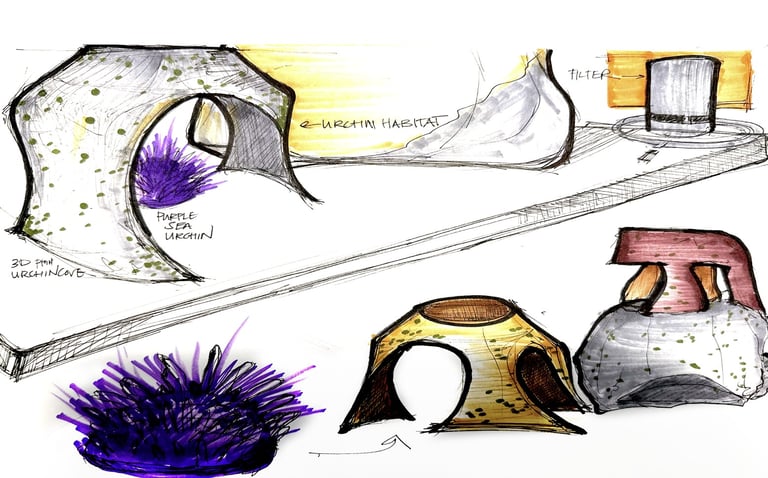

Ideations
In the brainstorming phase, I sketched out a range of possible solutions to address the main issue. Over time, I refined these ideas into a more focused design, which ultimately led to the UrchinCove tank. This process is documented through my sketches.
Prototyping Phases
Provide a short summary of your recent projects, highlighting the most important things.
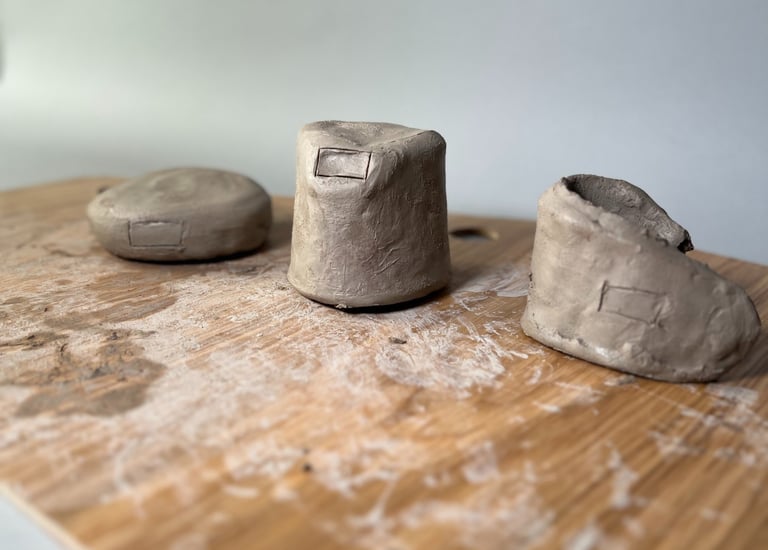

Prototype 1
Exploring base designs with clay to create organic shapes.
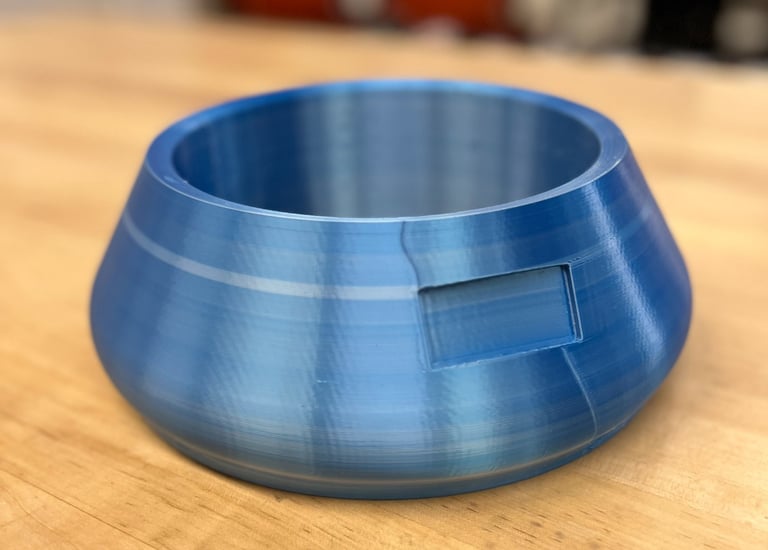

Prototype 2
Second prototype has a more wider and lower base,
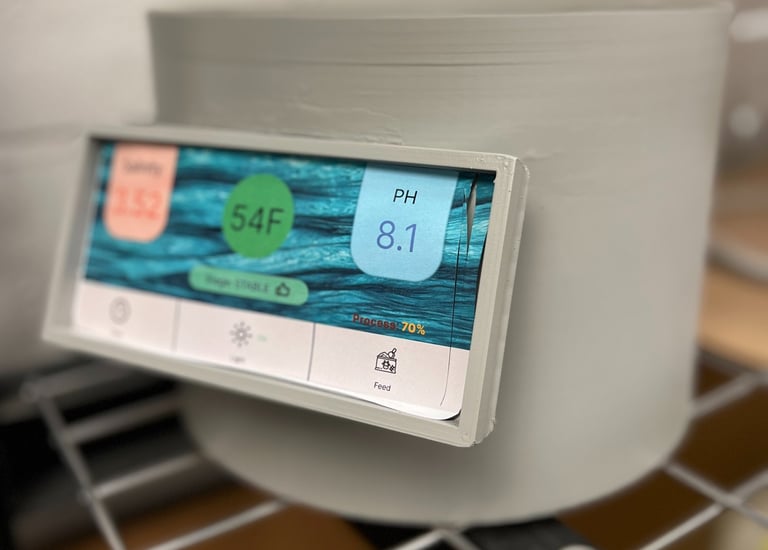

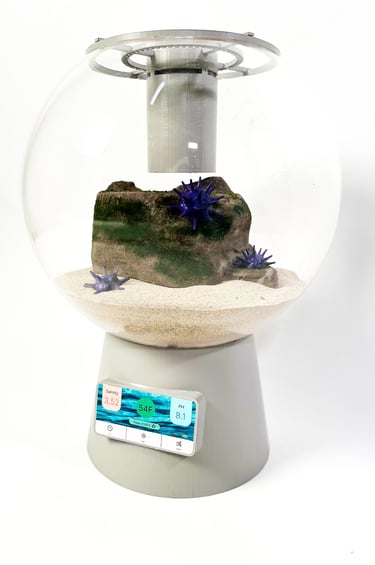

Prototype 3
The 3rd prototype was created by using foam and exploring screen placement.
High Fidelity
The High Fidelity model design was adjusted based on feedbacks, and 3D printing technology was use in this phase deliverable.


Manufacturing
The manufacturing process included 3D printing, foam modeling, and spray painting to refine both form and finish
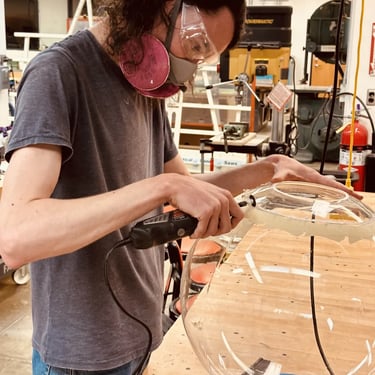
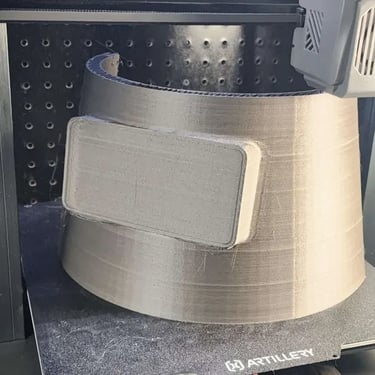
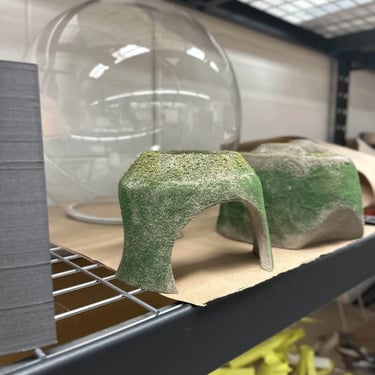
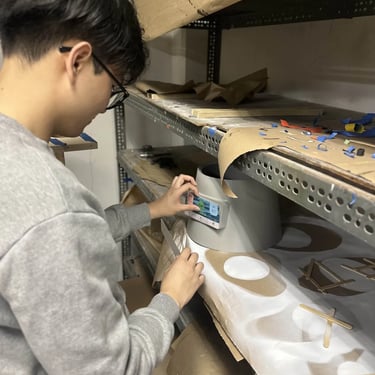
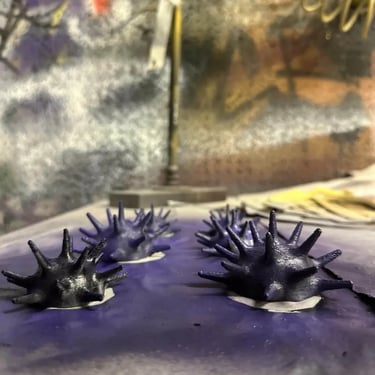
To start the process, I created sketches of the primary screens to outline functionality and hierarchy.
App Development
In this project, our approach is "Threefold": first, we conduct thorough research and engage directly with individuals who face the issue. Next, we perform hands-on tests, such as biological experiments, collect concrete data. Finally, we analyze these insights to inform the design before proceeding with app development. In essence, every step is grounded in rigorous research and testing to ensure a refined, professional outcome.
Research & Experiment
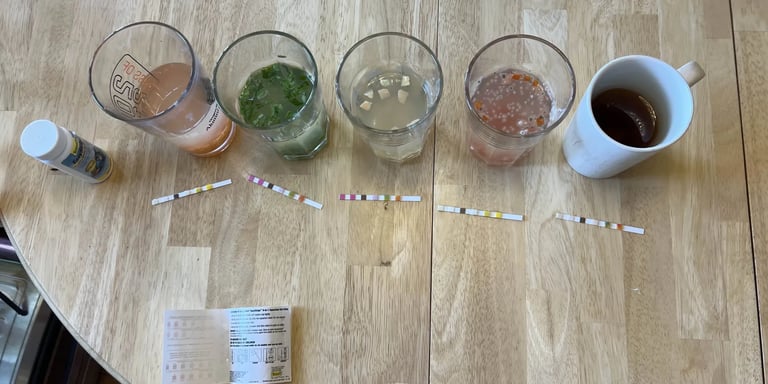



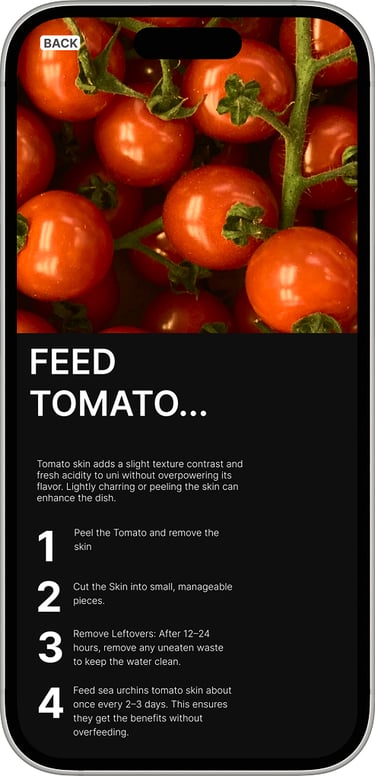

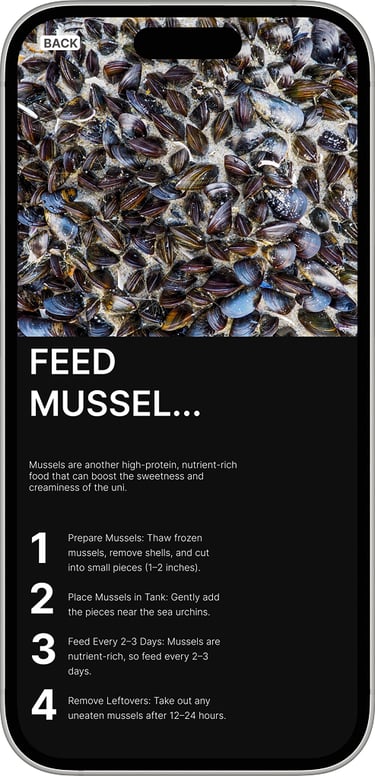

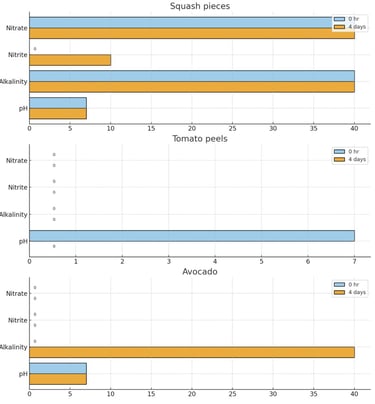

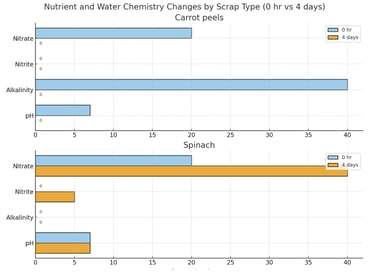

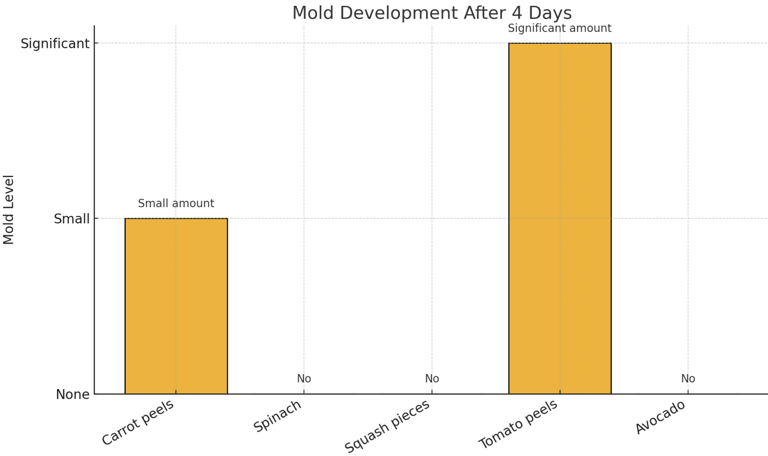



1
2
3
Testing pH, alkalinity, and nutrient levels among different vegetables in water.
Data is ingested and analyzed, then compiled into a curated default set for our manufacturer options provided to users.
Here’s an example of the process we created to deliver a more curated design experience. In this case, the manufacturer’s urchin feeding list is provided by us. App development is now underway, built on the research, knowledge, and data collected
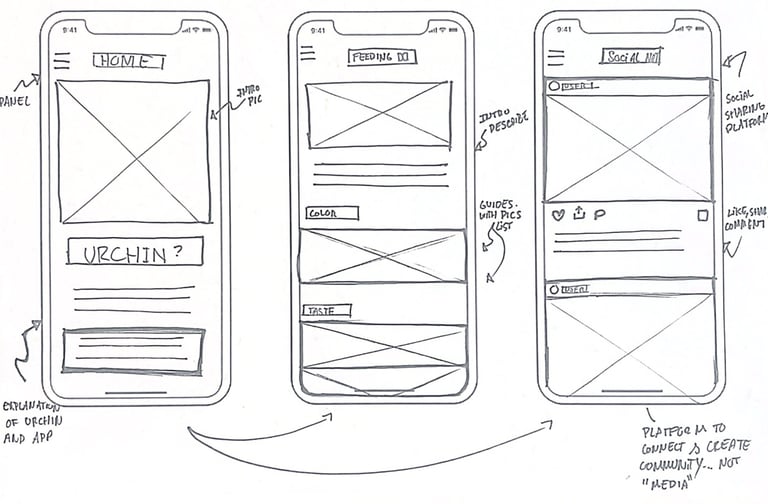

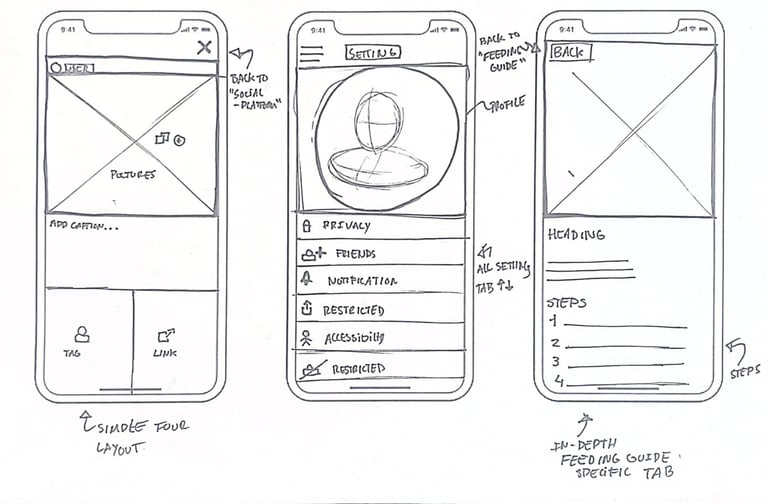

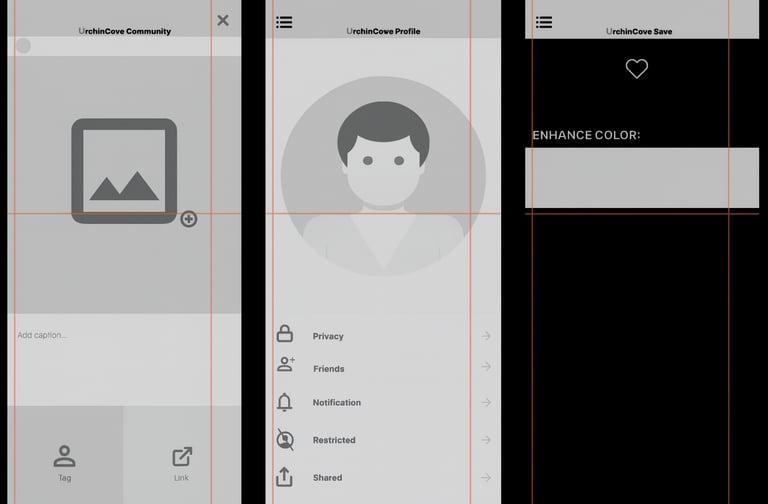

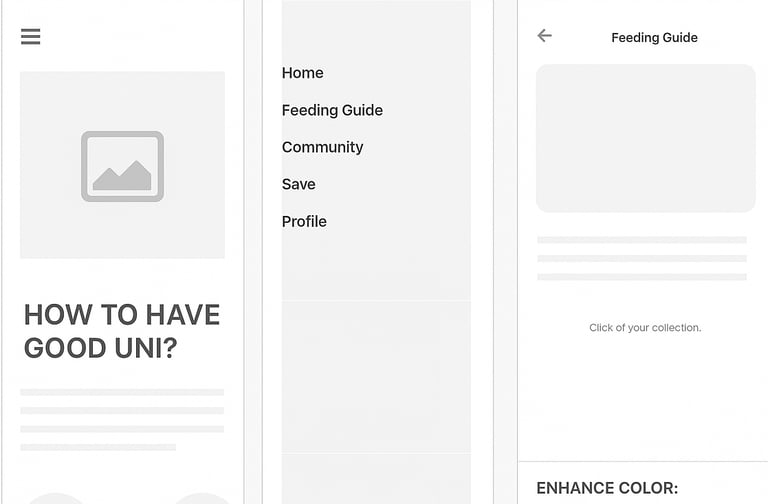

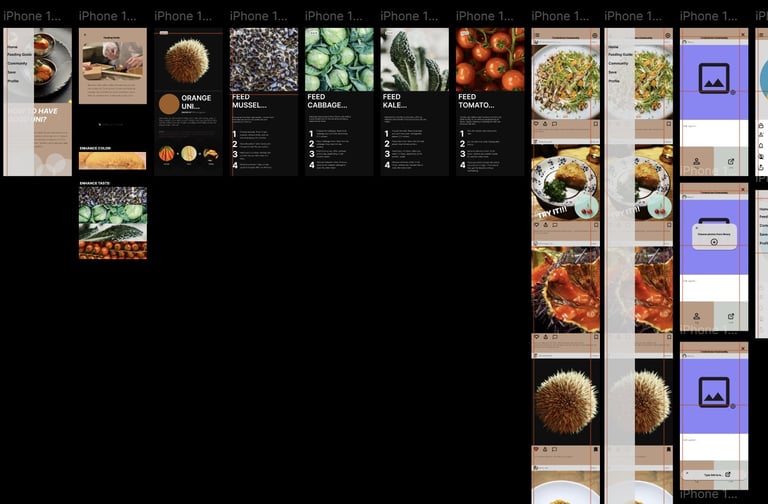

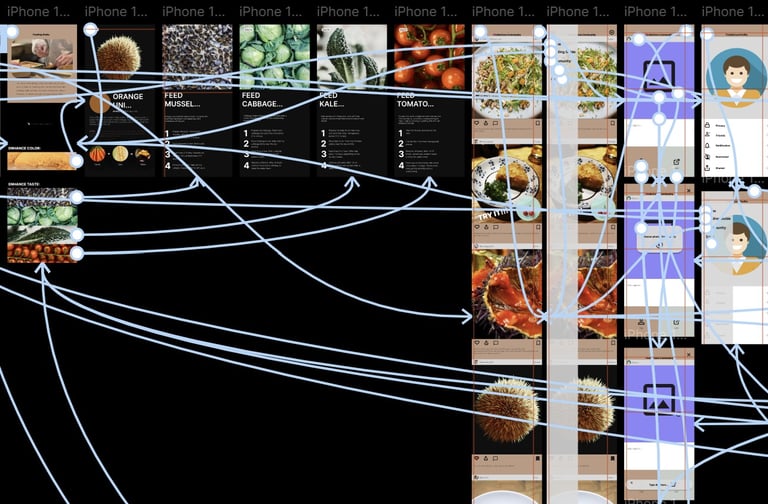

This step establishing a foundational frame, focusing on structure and usability prior to adding visuals design.
Last, established a cohesive design language unique to the brand while incorporating visual elements & wireframes.


